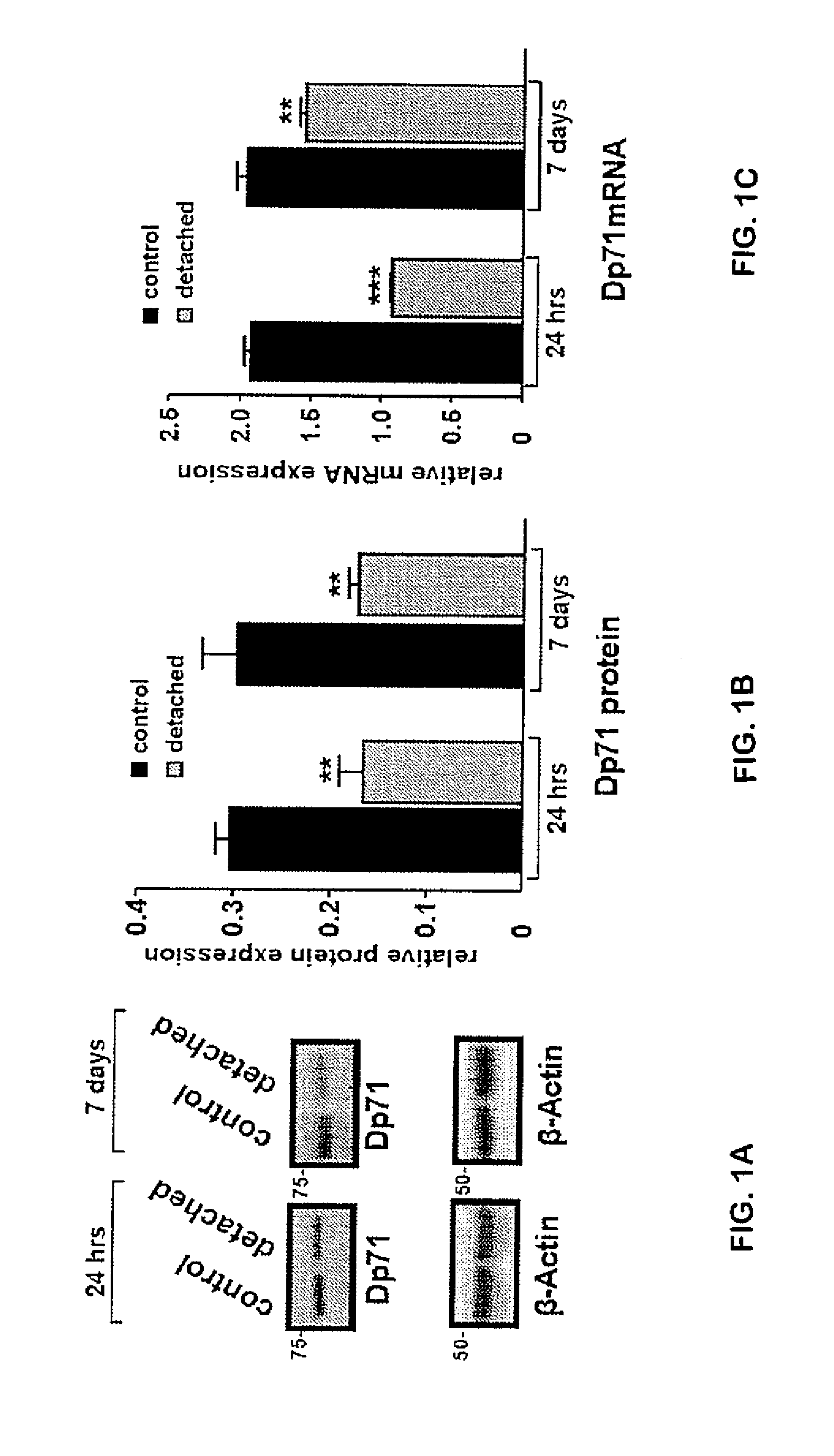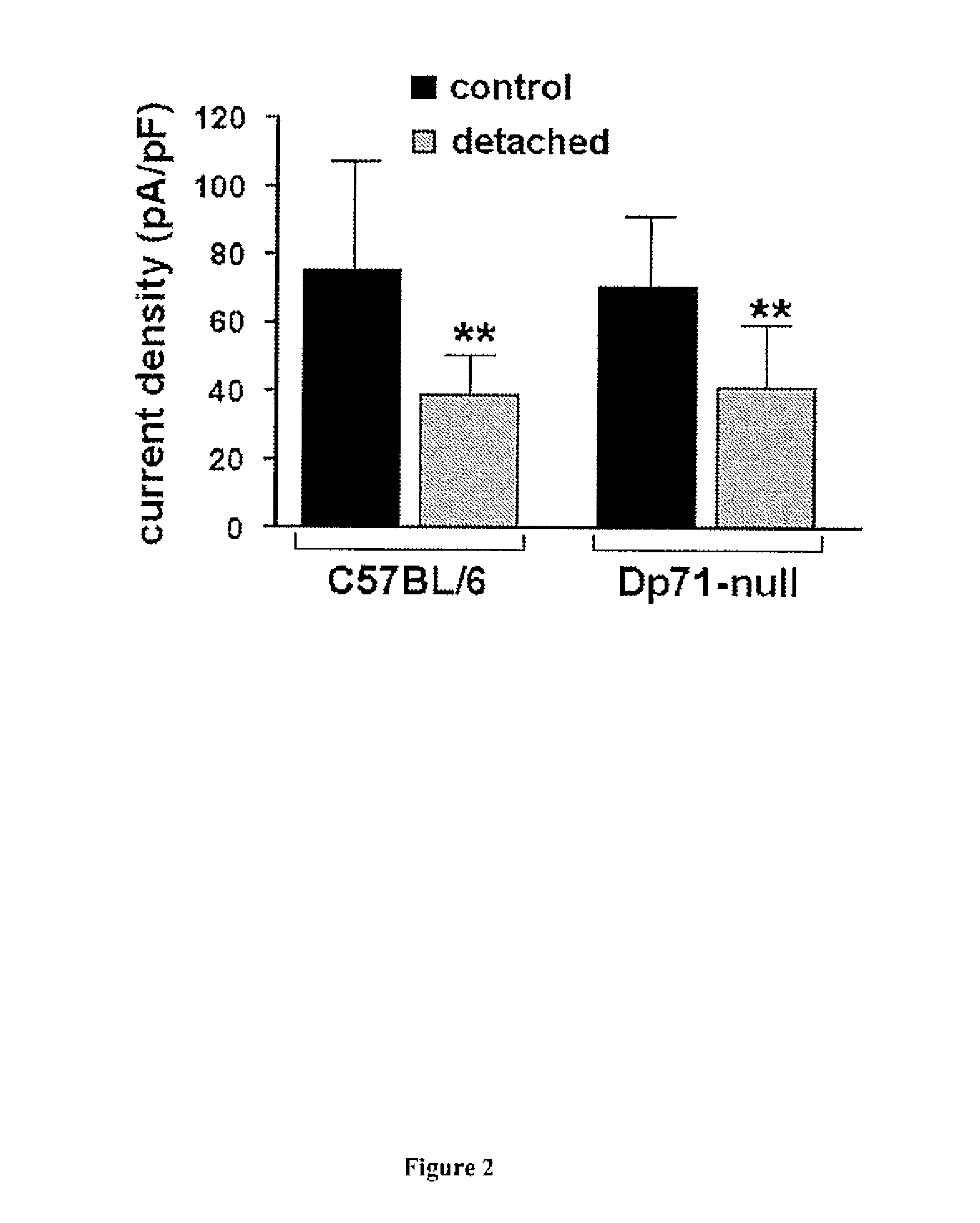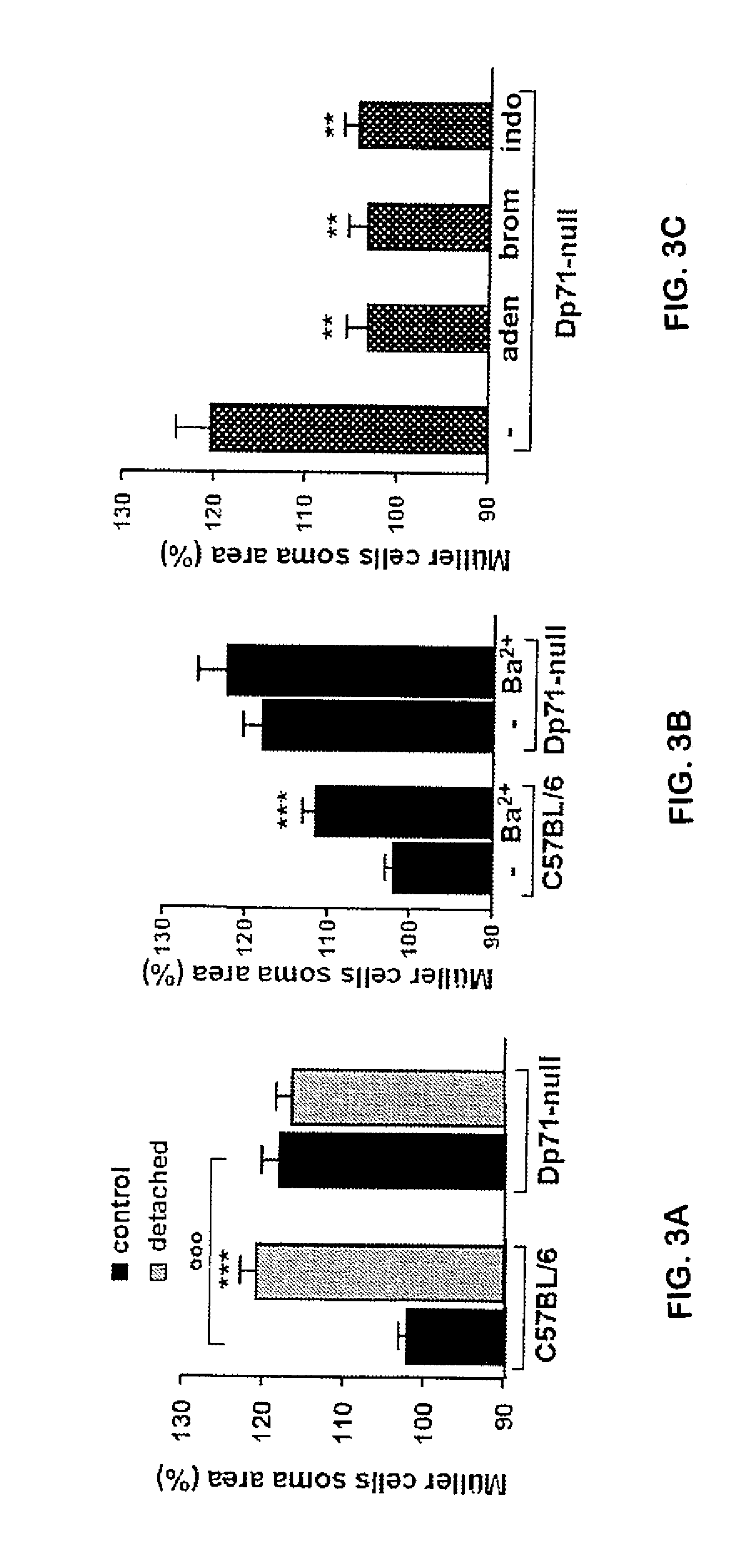Non Human Animal Models for Increased Retinal Vascular Permeability
a technology of retinal vascular permeability and non-human animal models, which is applied in the field of non-human animal models for can solve the problems of glia-neuron interaction, major unmet clinical need for developing preventative treatments for these disorders, and inability to meet the needs of patients, etc., to achieve the effect of increasing retinal vascular permeability
- Summary
- Abstract
- Description
- Claims
- Application Information
AI Technical Summary
Benefits of technology
Problems solved by technology
Method used
Image
Examples
example
Material & Methods
[0084]Animals:
[0085]The Dp71-null mice (Sarig R. et al. 1999) were obtained by replacing, via homologous recombination, most of the first and unique exon of Dp71 and of a small part of Dp71 first intron with a sequence encoding a β-gal-neomycine-resistance chimeric protein (β-geo). This abolished the expression of Dp71 without interfering with the expression of other products of the DMD (Duchenne Muscular Dystrophy) gene. C57BL / 6J mice strain (Charles River, France) was used as controls For this study. All animal use was conducted in accordance with the guidelines of the Association for Research in Vision and Ophthalmology (ARVO) Statement for the Use of Animals.
[0086]Antibodies:
[0087]Monoclonal antibodies targeting β-Actin and GFAP were purchased from Sigma-Aldrich (Deisenhofen, Germany). Polyclonal antibodies directed against dystrophins (H4) and utrophin (K7) were previously characterized (Rivier F. et al. 1999), whereas the ones directed against Kir4.1 and AQP4...
PUM
| Property | Measurement | Unit |
|---|---|---|
| pH | aaaaa | aaaaa |
| pH | aaaaa | aaaaa |
| resistances | aaaaa | aaaaa |
Abstract
Description
Claims
Application Information
 Login to View More
Login to View More - R&D
- Intellectual Property
- Life Sciences
- Materials
- Tech Scout
- Unparalleled Data Quality
- Higher Quality Content
- 60% Fewer Hallucinations
Browse by: Latest US Patents, China's latest patents, Technical Efficacy Thesaurus, Application Domain, Technology Topic, Popular Technical Reports.
© 2025 PatSnap. All rights reserved.Legal|Privacy policy|Modern Slavery Act Transparency Statement|Sitemap|About US| Contact US: help@patsnap.com



